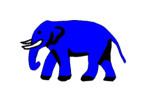Former type Private Defunct 1963 Founded 1840 Fate Liquidation | Ceased operations 1963 | |
 | ||
William Denny and Brothers Limited, and often referred to simply as Denny, was a Scottish shipbuilding company.
Contents
History
The shipbuilding interests of the Denny family date back to William Denny (born 1779), for whom ships are recorded being built in Dumbarton as far back as 1811 (e.g. sailing vessel Alpha). By 1823 the company name had changed to William Denny & Son (first ship the Paddle-Steamer Superb). From 1845 the company became Denny Brothers (this being William jnr, Alexander and Peter), and in 1849 the firm was reconstituted as William Denny & Brothers, this being William, James and Peter Denny.
Although the Denny yard was situated near the junction of the River Clyde and the River Leven, the yard was on the Leven. The founder developed the company's interests in ship owning and operation with interests in the British & Burmese Steam Navigation Company, the Irrawaddy Flotilla Company and La Platense Flotilla.
The Company built all types of ships but were particularly well known as producers of fine cross-channel steamships and ferries. It was a pioneer in the development of the ship's stabiliser in conjunction with Edinburgh-based Brown Brothers & Company. In 1913 the Channel steamer Paris was one of the first ships to use geared turbine engines utilising new Michell tilting-pad fluid bearing. It also undertook experimental work in hovercraft and helicopter-type aircraft.
A marine engineering company, also based in Dumbarton, was formed by Peter Denny, John Tulloch and John McAusland in 1850 as Tulloch & Denny. In 1862 the company was renamed Denny & Co. The company manufactured a wide range of types of marine engines and was absorbed into William Denny & Brothers in 1918.
Dennys were always innovators and were one of the first commercial shipyards in the world to have their own experimental testing tank: this is now open to the public as a museum. William Denny & Company went into voluntary liquidation in 1963.
Denny Ship Model Experiment Tank
Inspired by the work of eminent naval architect William Froude, Denny's completed the world's first commercial example of a ship testing tank in 1883. The facility was used to test models of a variety of vessels and explored various propulsion methods, including propellers, paddles and vane wheels. Experiments were carried out on models of the Denny-Brown stabilisers and the Denny hovercraft to gauge their feasibility. Tank staff also carried out research and experiments for other companies: Belfast-based Harland & Wolff decided to fit a bulbous bow on the liner Canberra after successful model tests in the Denny Tank. After the Denny yard closed, the test tank facility was taken over by Vickers Shipbuilding and Engineering Limited and used for the testing of submarines until the early 1980s.
Re-opened as part of the Scottish Maritime Museum in 1982, it retains many of its original features, including the 100m long ship testing tank. The towing carriage is still in working order and is demonstrated from time to time, but all instrumentation has been removed and so the tank cannot currently be used for hydrodynamic research and testing.
Denny-built vessels
Some significant Denny-built vessels include:
Company flag
The flag was unusual in having an elephant as its emblem. The flag consisted of a blue elephant against a white field. This image was taken from the civic arms of Dumbarton, and it also served to symbolise the strength and solidity of the company's products.
